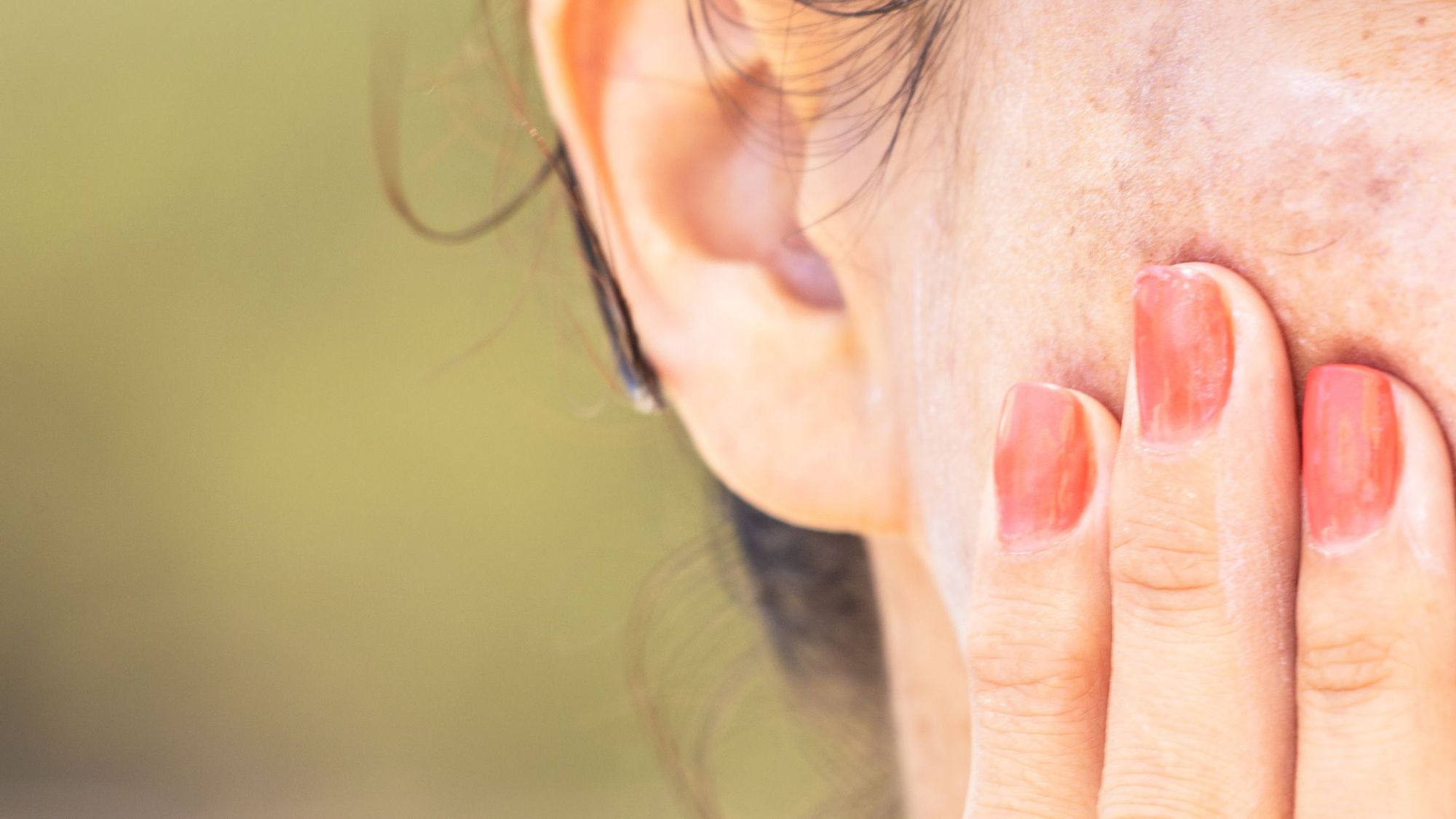
The myth of spot reduction has caused controversy in the health and fitness landscape for decades. Many of us would like an opportunity to change certain parts of our body, from flabby arms to ‘spare tire’ tummies. However, not everyone wants to lose weight overall, especially if only specific areas bother them, and they’re happy with the rest of their body.
Spot reduction is a weight loss myth that is promoted as a way to target the specific parts of your body you want to alter. It suggests we can potentially shrink the excess fat in our arms, tummies, and virtually anywhere else, by focusing on the right, targeted exercises.
Unfortunately, most of the research conducted around this concept suggests spot reduction simply doesn’t work. The evidence tells us that if we want to lose weight or burn fat in any part of our body, and maintain our ideal body shape, we need to take a holistic approach.

What is Spot Reduction? An Introduction
The theory of spot reduction is nothing new. For years, health and fitness companies have promoted exercise regimes and strategies with the promise of targeting specific, problem areas. You’ve probably encountered a few belly-fat-busting workout videos over the years, as well as routines designed to reduce the fat in your arms, thighs, and other areas.
Essentially, spot reduction is a type of targeted exercise intended to burn fat in specific areas. This methodology is often very appealing to people who have a hard time losing weight in troublesome areas. For instance, even with a regular diet and exercise, it can be difficult to reduce excess belly fat.
Many people believe concentrating heavily on problem areas in their exercises, such as plenty of ab crunches for stomach fat, or lots of tricep extensions and bicep curls for arms, can essentially melt or burn fat in those areas faster. In some cases, targeted exercise routines can even be beneficial. An ab exercise program which involves a lot of compound exercises may lead to additional fat loss around the abdomen.
However, this isn’t evidence that spot reduction works. Rather, people who tend to see results from targeted exercise routines generally benefit from increased energy expenditure, which has an impact on the entire body, not just one area. However, because these individuals are focused on reducing fat in one place, they’re more likely to notice the changes they see there.

Why Do People Try Spot Reduction?
Spot reduction is a compelling concept. We all have a vision of what our ideal body shape might look like, and spot reduction suggests we can essentially carve out the shape we want, piece by piece. The myth of spot reduction suggests that we can reduce the size of our arms and stomachs without losing the fat where we want it, such as in our buttocks or breasts.
Through spot reduction, people believe they can preserve the parts of their physique they already like, while minimizing fat in other spots. For instance, women might want to maintain an hourglass shape by reducing their waistline, without losing weight around the chest and glutes.
It’s also worth noting that many of us can carry excess fat in different ways. While some people find excess fat is distributed evenly throughout their bodies, others discover it tends to build up around their stomach, hips, and other areas. Everything from gender to age and genetics all play a role in how we gain weight, and accumulate stubborn areas of fat.
During certain periods of life, excess fat may also be more likely to build up in specific areas. Hormonal changes during menopause and perimenopause for women can cause weight to shift into the abdominal region.
Spot reduction suggests we can quickly reduce fat in problem areas, by working on expending energy from the correct muscles. Unfortunately, losing weight and fat is more complicated than it seems.
Here’s Why Spot Reduction Doesn’t Work
Understanding why spot reduction is a myth means first understanding how fat loss and weight loss works. Fat in the human body builds up in the form of triglycerides, which can be stored throughout the body, and accessed for energy in times of need. When you expend more energy than you consume, your body taps into these excess fat resources.
That’s why exercise and diet works well in combination. With a diet strategy, you cut down on your calorie consumption, and you burn calories with exercise, creating a caloric deficit which leads to fat loss. Exercise increases the energy you expend, pushing your body to break down triglycerides into free fatty acids. When these cells are broken down, parts of the body become smaller, and more toned.
However, when you exercise, and the body accesses fat stores for energy, it doesn’t just draw from the resources in the area where you’re using the most muscles. Energy is pulled from the body holistically, meaning some parts of your body may slim down faster than others, and it may not be the specific spots you want to slim down.
Targeting specific parts of your body during exercise can have a beneficial impact, however. It helps to build muscle and shape in the problematic areas of your body, which can create muscle tone in those areas. This extra tone can make you feel and look slimmer, even if you’re not losing fat from a specific area faster.
The Science That Proves Spot Reduction is a Myth
In some cases, spot reduction can appear effective. As mentioned above, working on specific areas of your body and exhausting specific muscles can increase fat loss through energy expenditure overall, and produce tone. However, the science suggests spot reduction isn’t nearly as impactful as we might believe.
During 1983, a study explored whether a sit-up regime would help target belly fat. However, the researchers discovered there was no significant change to fat cell size in the abdominal region compared to any other part of the body.
Similar and more recent studies have produced complementary findings. In 2011, researchers found an abdominal exercise strategy didn’t lead to any increased fat loss in the belly area compared to basic diet and regular workouts. In 2013, researchers even looked at whether repetitive leg exercises in one leg would cause faster fat reduction compared to the other leg. The study found that there was no difference in fat reduction between the trained leg and the untrained leg.
There have been some conflicting studies too, though these have been relatively small. In one study, scientists found fat loss did increase in areas closer to contracting muscles. This indicates exhausting a specific muscle may have an impact on areas of fat loss. Despite this, most of the research available indicates spot reduction simply isn’t an effective way to achieve your goals. In fact, some people who have achieved spot reduction did so by getting plastic surgery, which is sad because the ‘perfect body shape’ is much too distorted in the media.
Can You Lose Fat in Specific Areas?
So, what can people do if they want to lose fat from a specific area of their body? Unfortunately, the evidence suggests we can’t really choose where we’re going to lose fat when we lose weight.
Your genes, gender, hormones, body type, and various other factors influence ukl;lowhere fat diminishes during exercise and diet routines. However, there are ways you can improve your chances of achieving a more toned appearance in specific parts of your body.
For instance, cardiovascular exercise such as cycling, running, and walking leverages a number of muscle groups, and can help to burn calories. One study even found it may be particularly valuable for getting rid of stubborn areas of fat around the abdomen.
High-intensity interval training, or HIIT, which involves short bouts of intense workouts can also be extremely useful for getting rid of fat rapidly. However, for the most part, the best way to lose fat is to take a holistic approach. Whole-body exercises are excellent at burning more fat than targeted exercises. Compound workouts, which involve using more than one muscle group, will help you to burn more calories, and break down additional fat.
Combining exercise with diet is also helpful. Studies show that exercise generally isn’t enough to change body composition on its own. Consistently eating a balanced diet, reducing your calorie intake, and minimizing your consumption of certain foods such as sugar and saturated fats will ensure you can achieve your ideal weight and maintain it more easily.
The Myth of Spot Reduction: Final Thoughts
Spot reduction is a nice idea, but a myth is a myth. We all have parts of our body we dislike more than others. However, the evidence tells us we can’t always choose where we lose fat. In some cases, you may even find that you’re working towards the wrong goals in the first place.
Your genetics have a major impact on your body composition and body shape. Your CircleDNA test results can give you an insight into your genetic body composition. With this information, you can make more intelligent decisions about how to set goals for physical improvements.
Overall, focusing on developing a healthy body, with regular exercise and good dietary choices is much more effective than attempting to carve out the shape you want. If you’re particularly concerned about a problem area, you can always consider using exercise to tone your muscles in that region. Just don’t expect to lose fat any faster in one area with targeted exercise.
Finally, if certain aspects of your body are causing you a lot of concern, it may be a good idea to seek out counseling to improve your body image and develop more body positivity.
References:
- NCBI: Sex differences in human adipose tissues – the biology of pear shape
https://www.ncbi.nlm.nih.gov/pmc/articles/PMC3411490/ - TandFOnline: Effects of Sit up Exercise Training on Adipose Cell Size and Adiposity
https://www.tandfonline.com/doi/abs/10.1080/02701367.1984.10609359 - NCBI: The effect of abdominal exercise on abdominal fat
https://pubmed.ncbi.nlm.nih.gov/21804427/ - NCBI: Regional fat changes induced by localized muscle endurance resistance training
https://pubmed.ncbi.nlm.nih.gov/23222084/ - NCBI: Are blood flow and lipolysis in subcutaneous adipose tissue influenced by contractions in adjacent muscles in humans?
https://pubmed.ncbi.nlm.nih.gov/16985258/ - NCBI: Effects of an 8-Month Exercise Training Program on Off-Exercise Physical Activity
https://www.ncbi.nlm.nih.gov/pmc/articles/PMC3760344/ - Oxford: Physical activity does not influence obesity risk: time to clarify the public health message
https://academic.oup.com/ije/article/42/6/1831/737866 - Other resources:
https://www.healthline.com/nutrition/targeted-weight-loss#TOC_TITLE_HDR_7
https://www.acefitness.org/resources/everyone/blog/3629/myths-and-misconceptions-spot-reduction-and-feeling-the-burn/
https://athomefitness.co.uk/blog/myth-busting-spot-reduction/
https://mennohenselmans.com/science-spot-reduction-myth/






